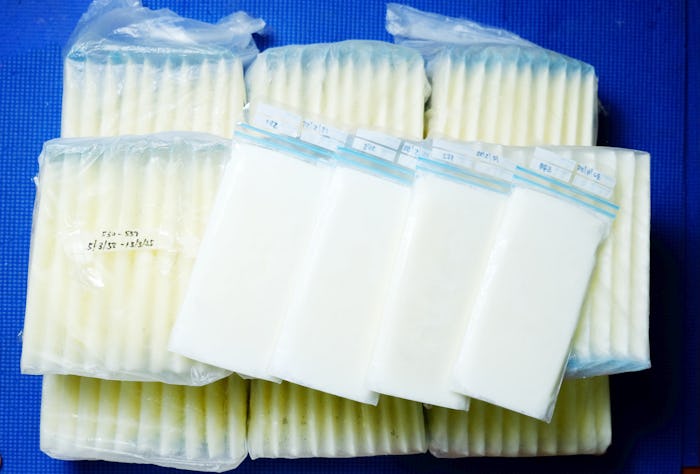Life

Does Foremilk Thaw Differently Than Hindmilk?
Milk is really cool, and human milk is more than just a delicious treat for your babies. It is a wildly complex, constantly evolving, turbo-charged food that reacts differently in different situations as needed. You can see it when you freeze it and then thaw it, especially if you notice the foremilk and hindmilk. But does foremilk thaw differently than hindmilk? Is it a different color? Does it contain different nutrients?
According to the Pediatric Clinicians of North America, breast milk begins evolving from day one. It starts as colostrum, which is frequently referred to as "liquid gold" because of its growth and immuno-positive properties, and then begins shifting in nutrients day to day, hour to hour. It even has complexities that span the width of one feeding.
While you may expect that the milk you produce will be different when your baby is breastfeeding around the clock versus when they are breastfeeding more infrequently, you may not know that there is a difference in milk between the time you begin pumping or nursing, and when the breast is ultimately emptied. This is commonly referred to as foremilk and hindmilk, according to La Leche League International (LLLI).
Foremilk is lower in fat than hindmilk, and is the first milk expressed by the breast. It quenches baby's thirst, according to LLLI, and when the baby is sated with it, their sucking pattern triggers a deeper response within the breast that allows the hindmilk, a richer, fattier milk, to be expressed from the breast. It's like when you've been outside all day, and you're exhausted and thirsty. You go to the fridge and immediately quench your thirst with a big glass of ice cold water. After that, then you settle in with a full glass of cabernet and Netflix. They're both completely essential to your enjoyment in that moment.
These differences in foremilk and hindmilk can be seen when you notice the separation that naturally occurs in a bottle of stored, pumped milk. The fatty hindmilk rises to the top, much like traditional cream on milk. They also freeze at different rates, with the fatty layer freezing more slowly than the lean layer, according to the American Chemical Society's journal, Langmuir.
If they freeze in differing stages, is the reverse true? Does foremilk thaw differently from hindmilk? Absolutely. According to the journal, any liquid rich in lipids (fats) will thaw more quickly than liquids which have more water content. If you've already frozen your milk, you've no doubt seen this in action. During the thawing process, the milk goes from frozen, to slushy, to not mixed well, before you squish it up and it's combined. This is perfectly normal, and shouldn't alarm you. As long as you're mixing to combine the milk after its thawed, it's all one product again, according to the Pediatric Clinicians of North America.
It's pretty amazing how breast milk works, and the complexities of each layer are incredibly detailed, but they do make for some freezing and thawing issues. In the scheme of things, it's pretty small potatoes. Just remember to stir it up before you serve it, and you're good to go.